By clicking a retailer link you consent to third-party cookies that track your onward journey. This enables W? to receive an affiliate commission if you make a purchase, which supports our mission to be the UK's consumer champion.
Best carbon monoxide detectors

In this article
- The carbon monoxide detectors we tested
- More carbon monoxide detectors from our tests
- Which? Don't Buy carbon monoxide detectors
- How we test carbon monoxide detectors
- Where to place and install a carbon monoxide detector
- What to do when a carbon monoxide detector goes off
- Can you use rechargeable batteries in a carbon monoxide detector?
- Why is my carbon monoxide detector beeping?
Our thorough and independent lab tests show which carbon monoxide (CO) detectors will sound the alarm when there's a build-up of the killer gas and which will remain silent – so that you can buy a reliable one for your home.
We test carbon monoxide detectors to British Standard BS EN 50291-1. To be a Best Buy alarm, it needs to detect carbon monoxide in every one of the 20+ gas detection tests we carry out. That's whether we're testing them with low yet dangerous concentrations of the gas or catastrophically high amounts.
Here, we compare CO detectors from Aico, FireAngel, Firehawk, Google Nest and Kidde, along with unbranded models, to find the alarms that will detect CO and sound every time. Plus, the Don't Buys that can't be relied upon to detect the danger.
How our tests find you the best
Detecting carbon monoxide (CO)
Low amounts of CO can be dangerous and higher concentrations can be deadly. We test how quickly detectors sound between 50 parts per million (ppm) of CO and 300ppm.
Testing to the limit
We hit each carbon monoxide detector with a cataclysmic amount of CO. Then we test it again to see if it can continue to be trusted to sniff out danger.
Longevity
We put each detector through its paces multiple times, including retesting it after 90 days to see if it can be relied on to keep working as well as it should.
We also test...
How loudly each CO detector sounds the alarm, making sure that to pass our tests each one needs to hit a minimum 85dB at a distance of 1 metre.
The carbon monoxide detectors we tested
The biggest brands and the most popular 14 carbon monoxide detectors are listed below.
Only logged-in Which? members can view the best carbon monoxide detectors from our tests.
Join Which? to get instant access to our test results and Best Buy recommendations below.
| Carbon monoxide detector | Price | Type | Power source | Carbon monoxide detection tests failed |
|---|---|---|---|---|
Sign up to reveal Get instant access to this and all our scores and recommendations Unlock tableDigital £8.99 per month, cancel any time. Already a member? Log in | Interlinked | Mains powered | ||
| Standalone | 10-year sealed battery | |||
| Standalone | 10-year sealed battery | |||
| Interlinked | 10-year sealed battery | |||
| Standalone | Replaceable batteries | |||
| Standalone | Replaceable batteries | |||
| Standalone | 10-year sealed battery | |||
| Standalone | 10-year sealed battery | |||
| Standalone | 7-year sealed battery | |||
| Standalone | 10-year sealed battery | |||
| Standalone | Replaceable batteries | |||
| Standalone | 10-year sealed battery | |||
| Standalone | 10-year sealed battery | |||
| Standalone | Replaceable batteries |
Sign up to reveal
Get instant access to this and all our scores and recommendations
Unlock tableDigital £8.99 per month, cancel any time.
Already a member? Log in
Date tested: July 2025 and May 2023. Page last checked: December 2025. We are not able to show every retailer and cheaper prices may be available. All products passing every carbon monoxide detection test are Best Buys.
All of the carbon monoxide detectors we tested are listed in alphabetical order below.
Only logged-in members can view the best carbon monoxide (CO) detectors from our tests.
Join Which? to get instant access to our test results and Best Buy recommendations below.
Aico Ei3028 Heat & Carbon Monoxide Alarm
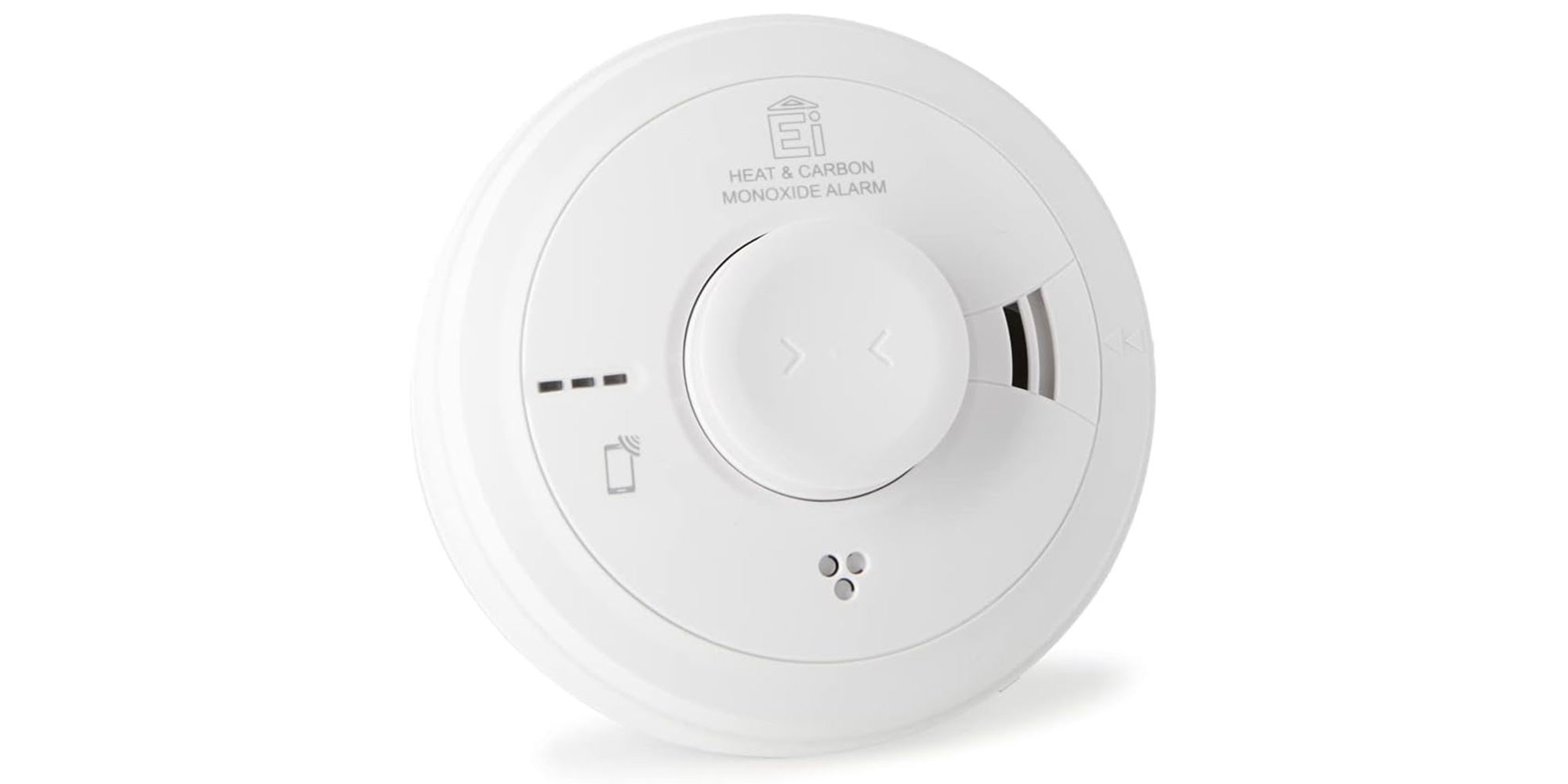
Most recently tested July 2025
Standalone or interlinked Interlinked
Power source Mains powered with a 10-year sealed back-up battery
Need to know 10-year battery life, five-year warranty, can be linked with other related Aico alarms
Aico Ei208 Carbon Monoxide Alarm
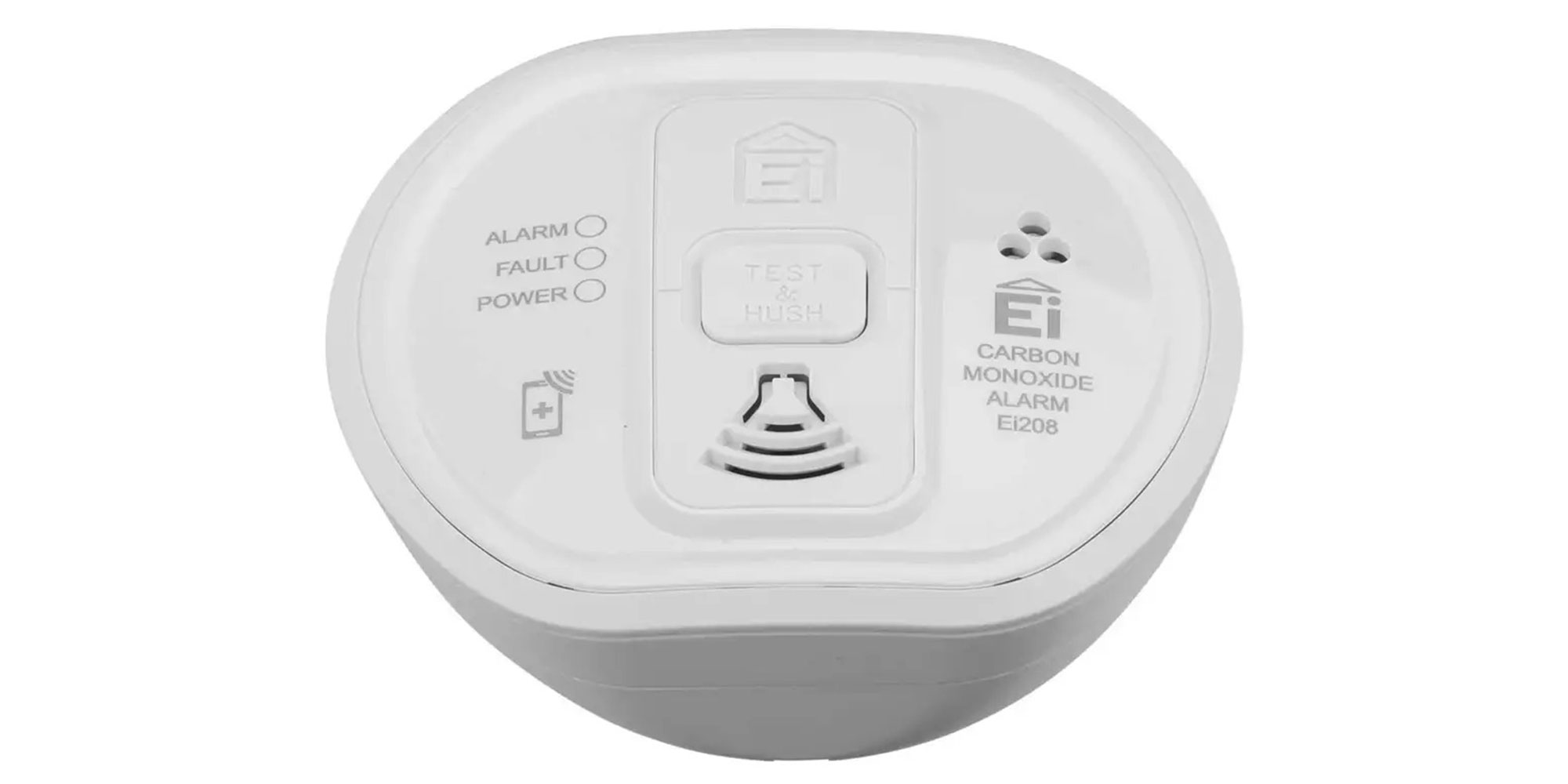
Standalone or interlinked Standalone
Power source 10-year sealed battery
Need to know Five-year warranty, alarm reports can be downloaded to a smartphone, hush/test button, LED indicators show the alarm’s status
FireAngel FA3820

Most recently tested May 2023
Standalone or interlinked Standalone
Power source Sealed 10-year battery
Need to know 10-year battery life, five-year warranty
FireAngel SCB10-R Combination Carbon Monoxide and Smoke Alarm
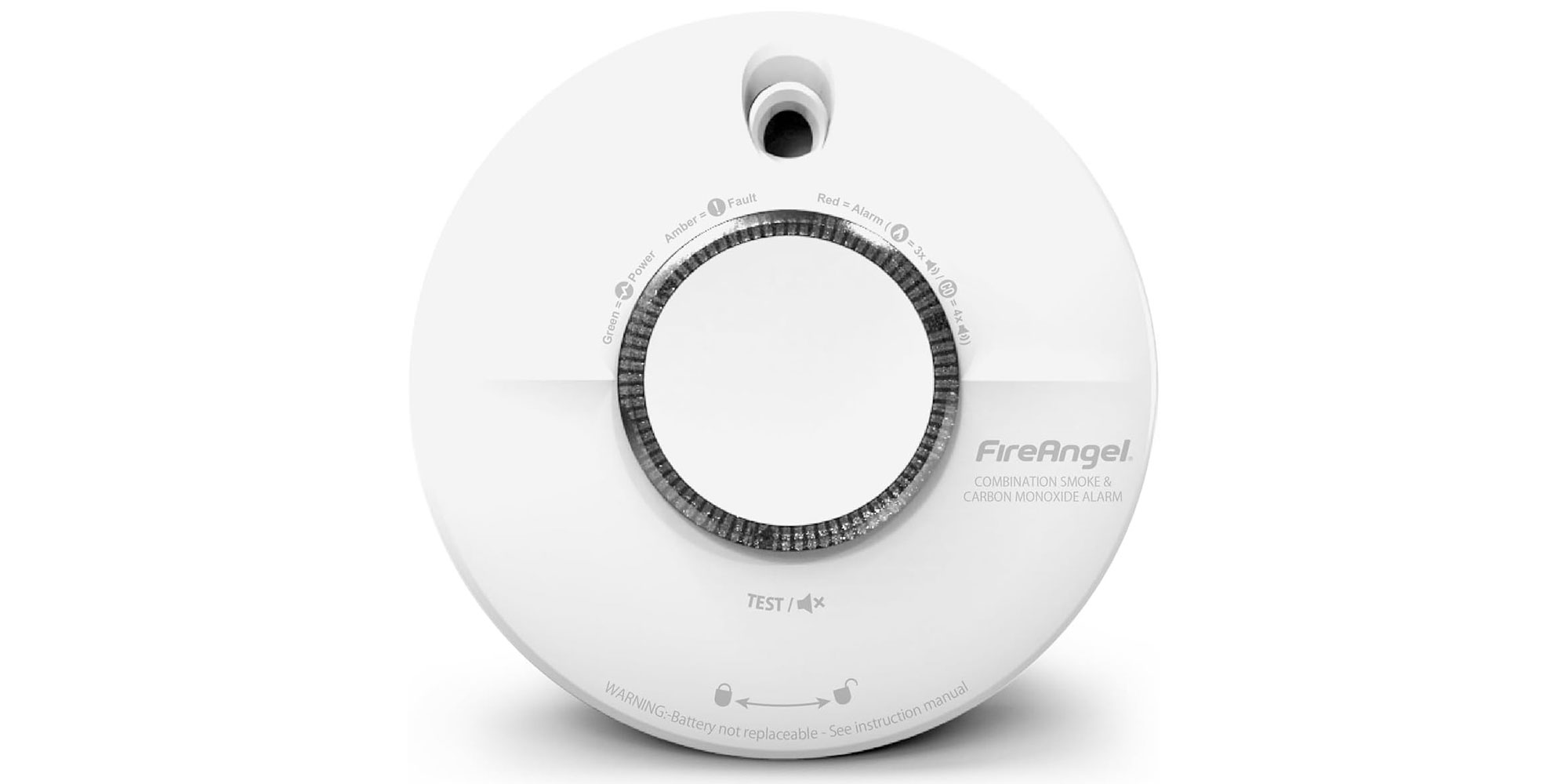
Most recently tested July 2025
Standalone or interlinked Standalone
Power source 10-year sealed battery
Need to know Combined CO and smoke alarm (only tested for CO in this test), standalone, sealed battery, 10-year battery life, large hush/test button, three-year warranty
FireAngel FP1820W2-R
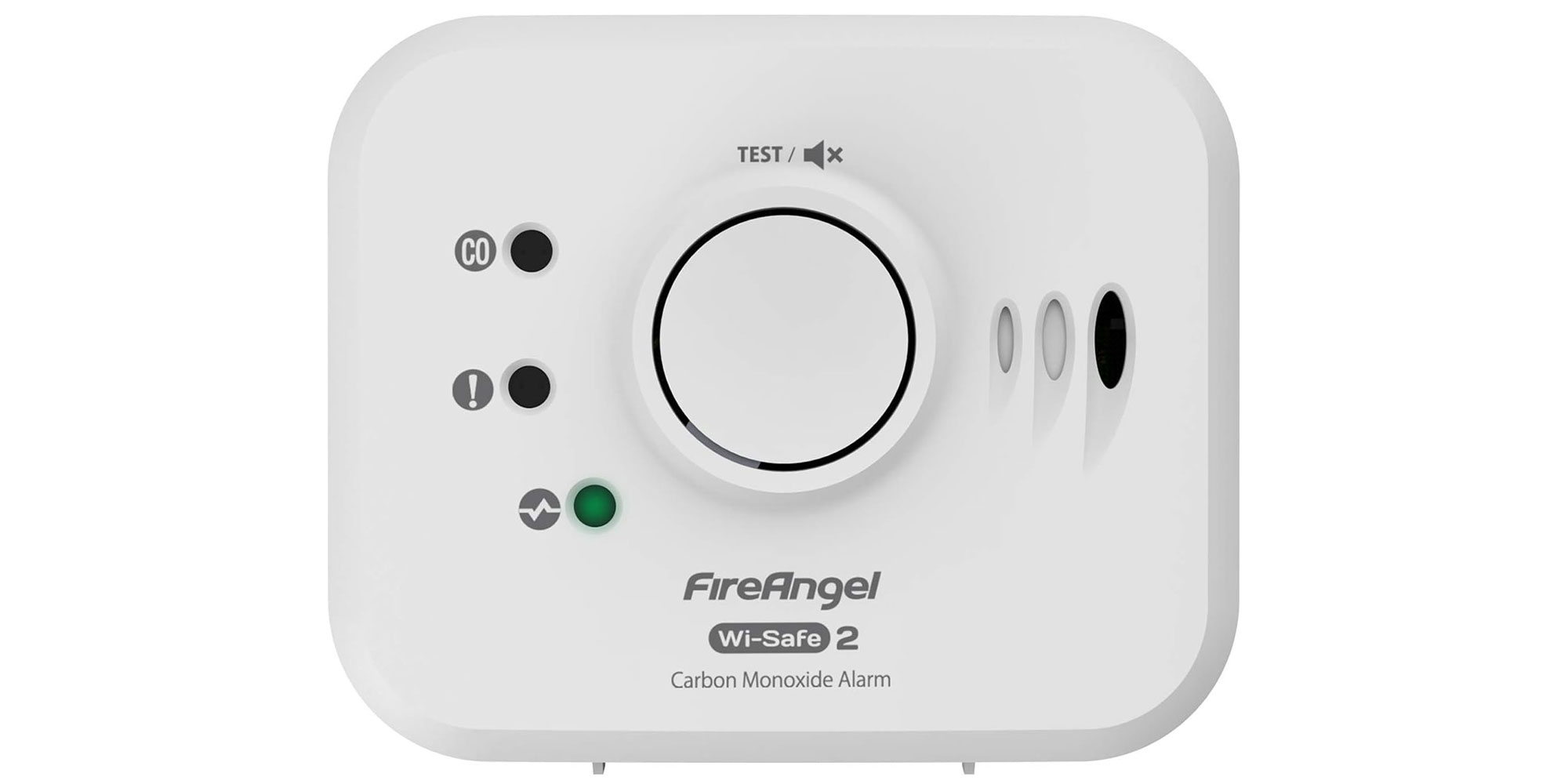
Most recently tested July 2025
Standalone or interlinked Interlinked
Power source 10-year sealed
Need to know Can be linked with other related FireAngel alarms, 10-year battery lifetime, five-year warranty
FireAngel FA3313

Standalone or interlinked Standalone
Power source Disposable batteries
Need to know 10-year battery life, five-year warranty, can be wall-mounted or freestanding, large test/hush button
FireAngel FA6813
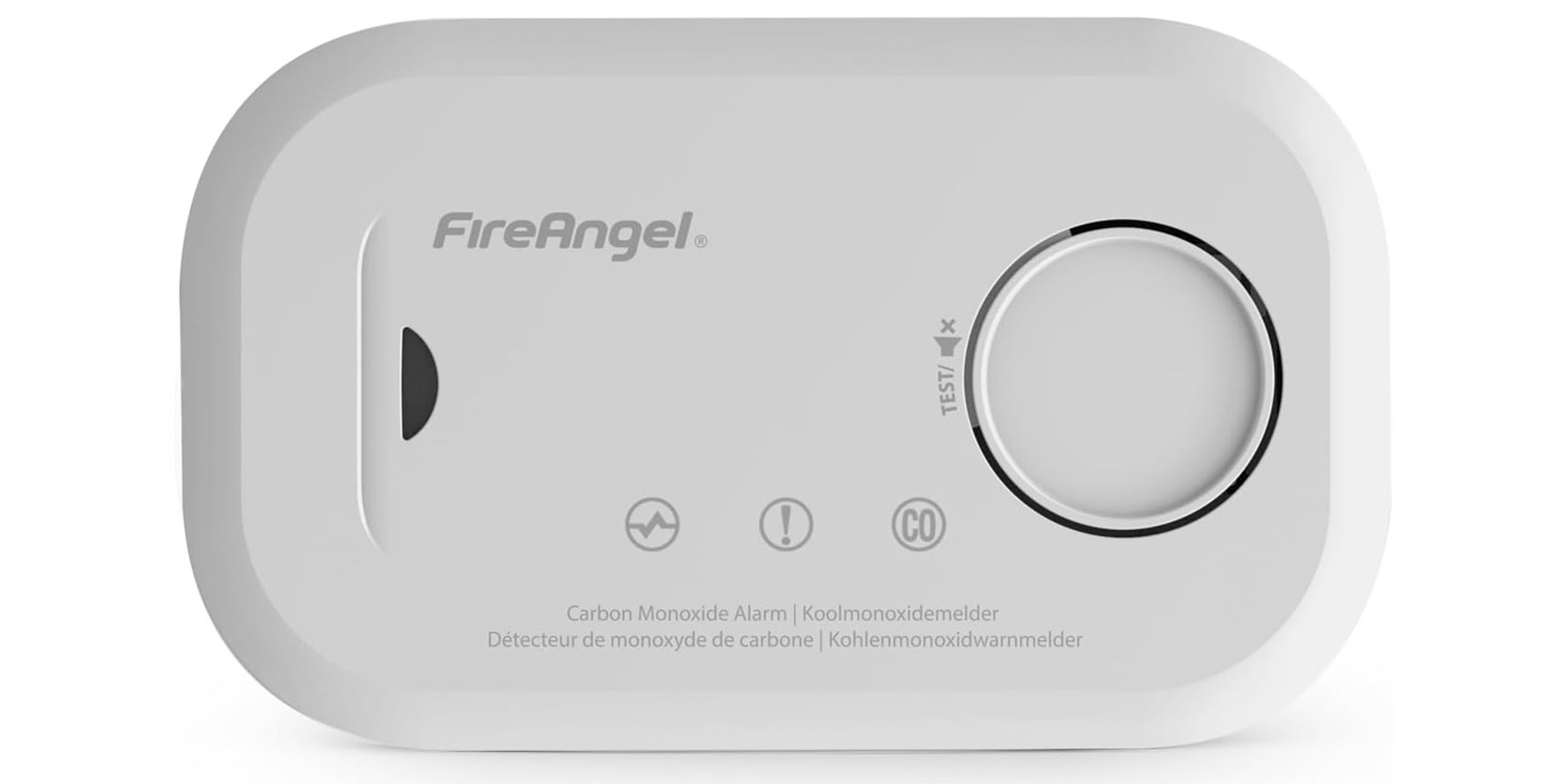
Most recently tested July 2025
Standalone or interlinked Standalone
Power source Disposable batteries
Need to know Uses two AA batteries, large hush/test button, indicators show whether CO has been detected in the previous 30 days
Firehawk CO7B-10Y

Available from Amazon (£19.42), Safelincs (£20.88) and Safefiredirect (£17.93)
Most recently tested May 2023
Standalone or interlinked Standalone
Power source 10-year sealed battery
Need to know 10-year battery life, 10-year warranty, compact and portable, comes with a stand, data recorded by the alarm can be sent to a phone
Firehawk CO7BD
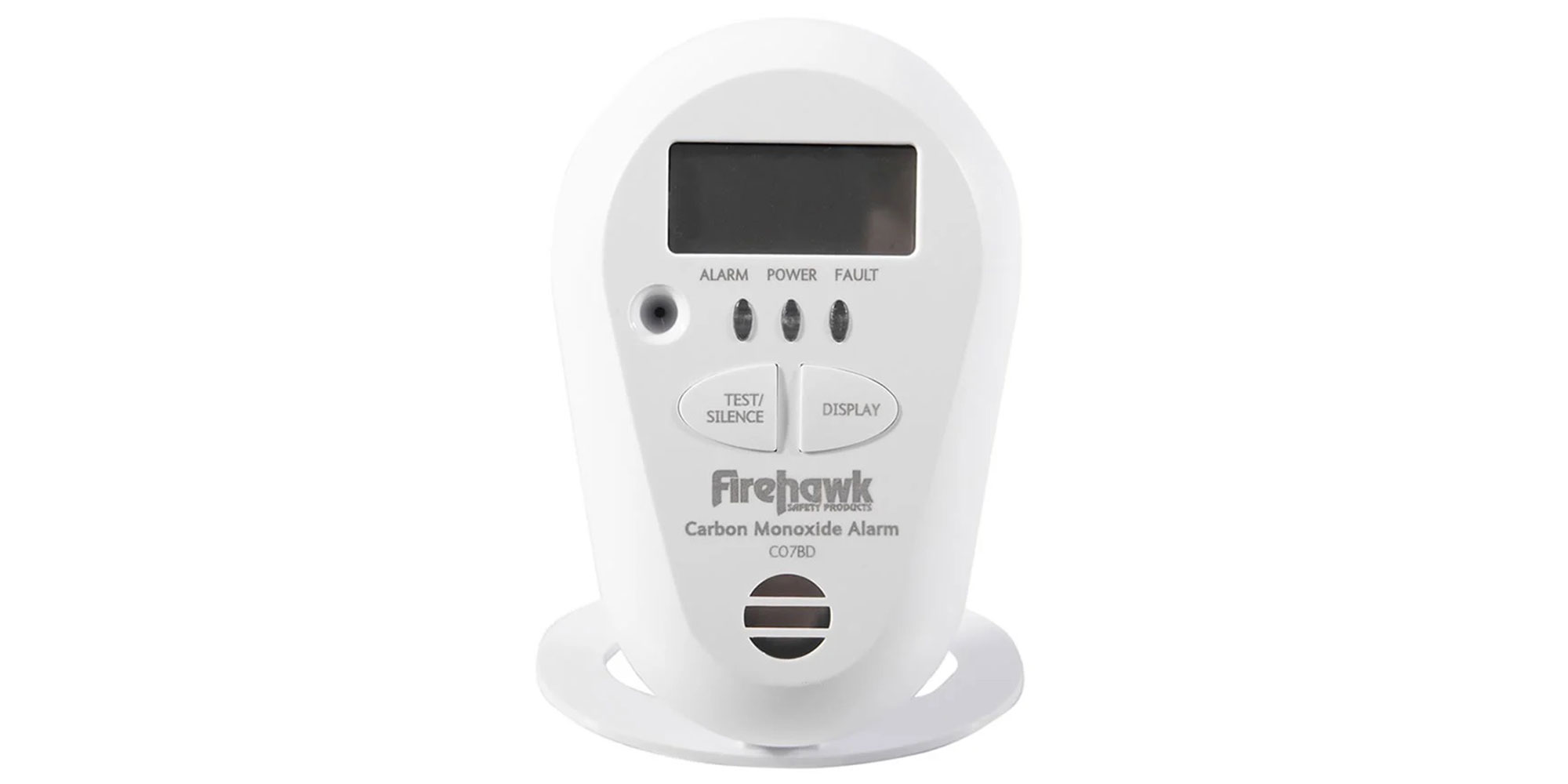
Most recently tested July 2025
Standalone or interlinked Standalone
Power source Seven-year sealed battery
Need to know Seven-year battery life, seven-year warranty, can be freestanding or fixed, digital display
Kidde K5DCO
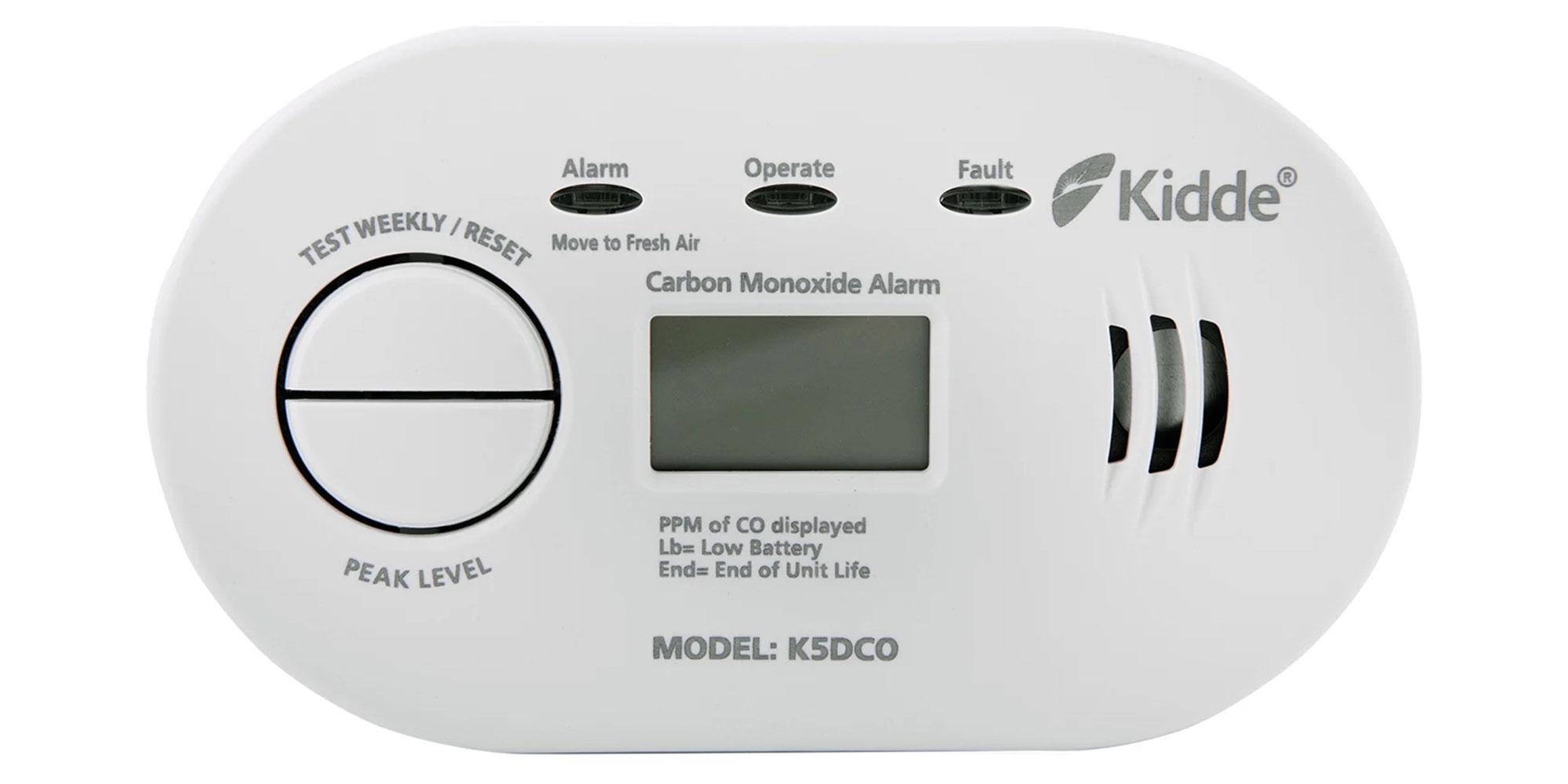
Most recently tested July 2025
Standalone or interlinked Standalone
Power source Disposable batteries
Need to know Uses two AA batteries, large hush/test button, digital screen shows CO levels, seven-year warranty
Kidde K10LLCO
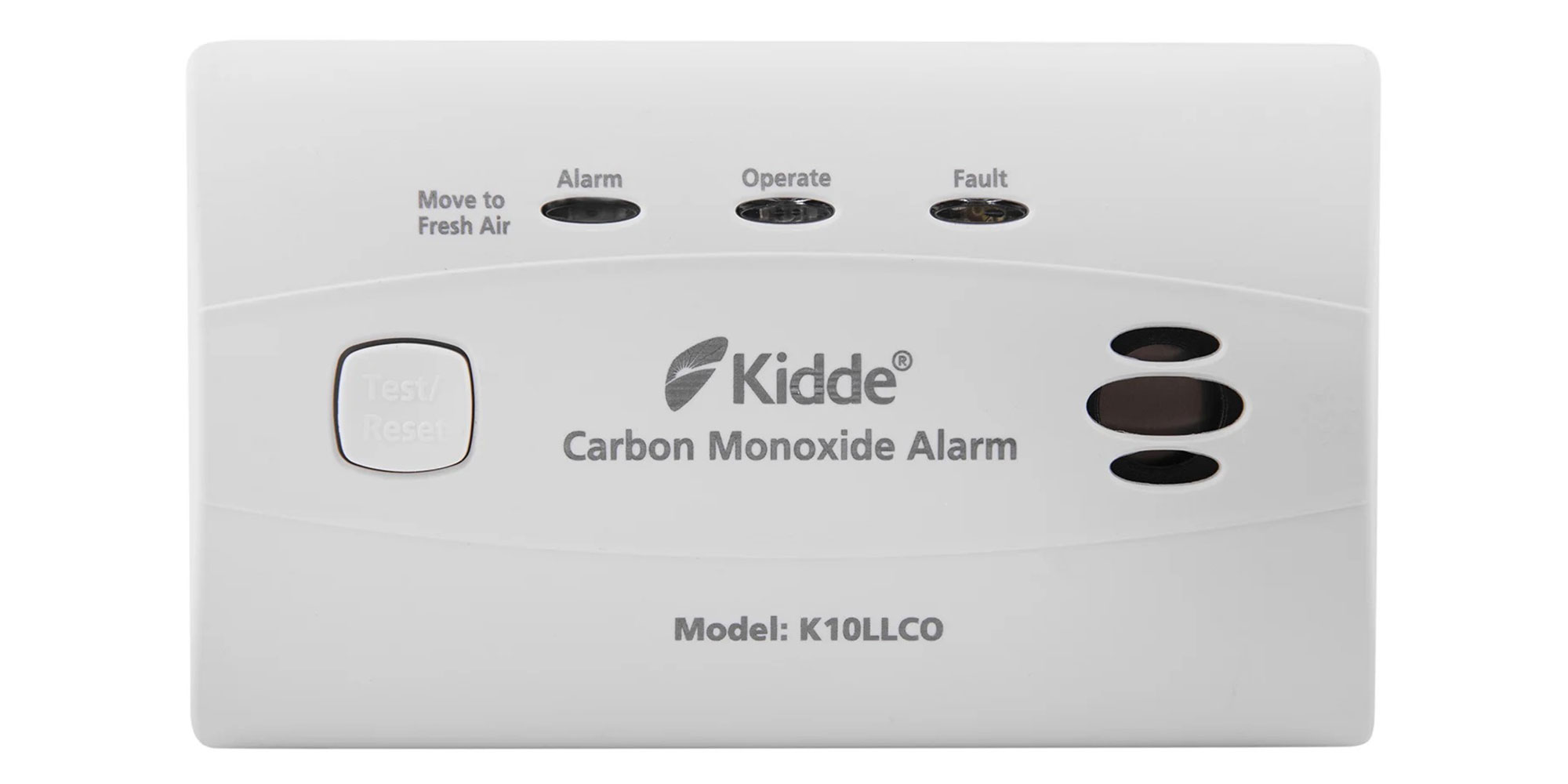
Most recently tested July 2025
Standalone or interlinked Standalone
Power source 10-year sealed battery
Need to know 10-year warranty, 10-year battery life, LEDs to show when the alarm is working, faulty and sounding, can be freestanding or wall-mounted
Kidde K10LLDCO

Most recently tested May 2023
Standalone or interlinked Standalone
Power source 10-year sealed battery
Need to know 10-year battery life and warranty, can be freestanding or wall-mounted, can't be linked to other alarms
Kidde 2030-DCR

Most recently tested May 2023
Standalone or interlinked Standalone
Power source Disposable batteries
Need to know Three-year warranty (five-years if bought through Safelincs), can be wall-mounted or freestanding, can't be linked to other alarms
Ultrafire UBCO1D
Verdict Log in or join Which? to instantly reveal
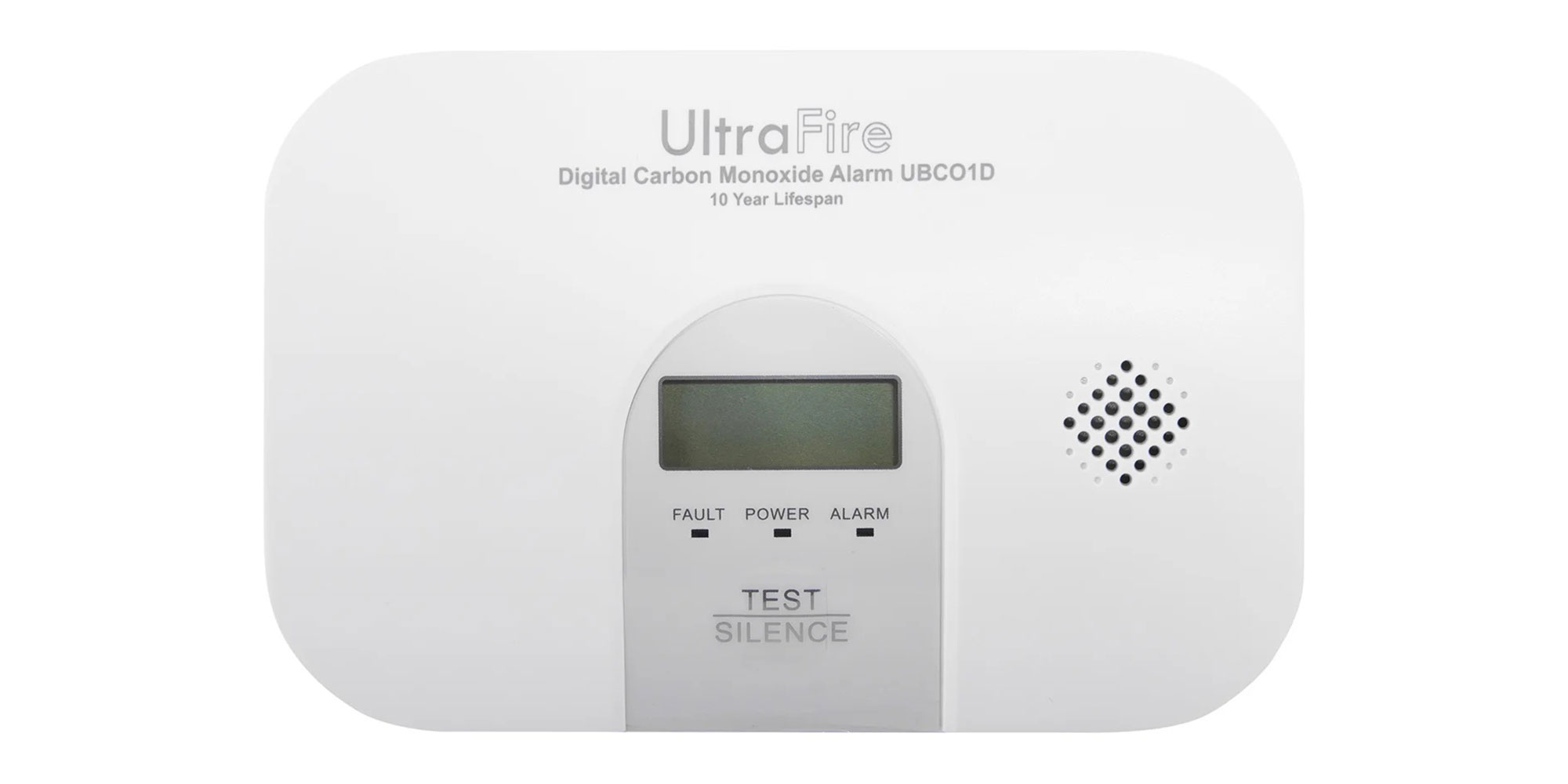
Most recently tested July 2025
Standalone or interlinked Standalone
Power source Disposable batteries
Need to know Standalone alarm that can’t be linked to other related detectors, uses two AA disposable batteries, digital display, hush/test button, 10-year warranty and alarm lifespan
More carbon monoxide detectors from our tests
Here's how the rest of the carbon monoxide detectors from our test measured up, listen in alphabetical order.
| Carbon monoxide detector | Price | Type | Power source | Carbon monoxide detection tests failed |
|---|---|---|---|---|
| Aico Ei3018 | SQUIRREL_TEXT_50006930 | Interlinked | Mains powered | |
| FireAngel FA3322 | SQUIRREL_TEXT_50000373 | Standalone | 10-year sealed battery | |
| Kidde 4MCO | SQUIRREL_TEXT_50006929 | Interlinked | Mains powered | |
| Kidde K5CO | SQUIRREL_TEXT_50000350 | Standalone | Disposable batteries | |
| Kidde K7CO | SQUIRREL_TEXT_50009035 | Standalone | Disposable batteries | |
| Kidde K7DCO | SQUIRREL_TEXT_50000355 | Standalone | Disposable batteries | |
| Nest Protect Smoke + CO Alarm | SQUIRREL_TEXT_12876760 | Interlinked | Disposable batteries |
Date tested: July 2025 and May 2023. Page last checked: December 2025. We are not able to show every retailer and cheaper prices may be available. All products passing every carbon monoxide detection test are Best Buys.
Which? Don't Buy carbon monoxide detectors

The worst carbon monoxide (CO) detectors don't sense when there's a build-up of CO, they don't sound the alarm and they pose a danger to anyone who has one installed in their home.
That's why every carbon monoxide detector we assess needs to pass every one of our 20+ gas detection tests. Any carbon monoxide detector that fails to detect a build-up of the deadly gas in our tests is a Don't Buy.

Almost every Don't Buy carbon monoxide detector we've tested was bought from sellers listing cheap and unbranded detectors on online marketplaces. So avoid buying this kind of alarm and look for detectors from brands you recognise sold through well-known high street and online retailers.
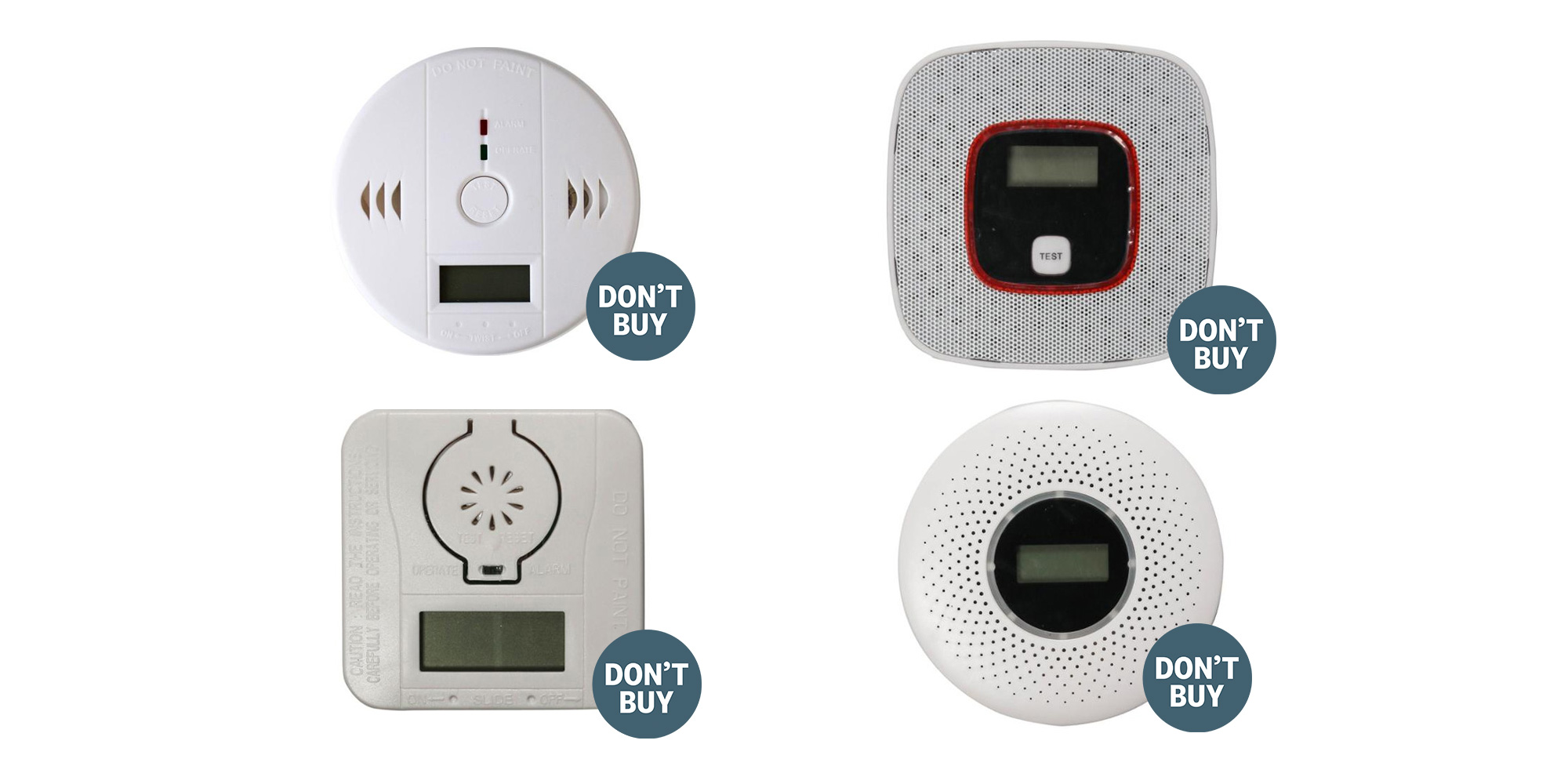
As well as failing to detect carbon monoxide, many of the Don't Buy detectors we've tested have instructions saying not to install them in the kitchen – which is where you'll find potential sources of CO in many UK homes (gas boilers, hobs and ovens). It's essential to have a carbon monoxide detector in the same room as any fuel-burning appliances in your home.
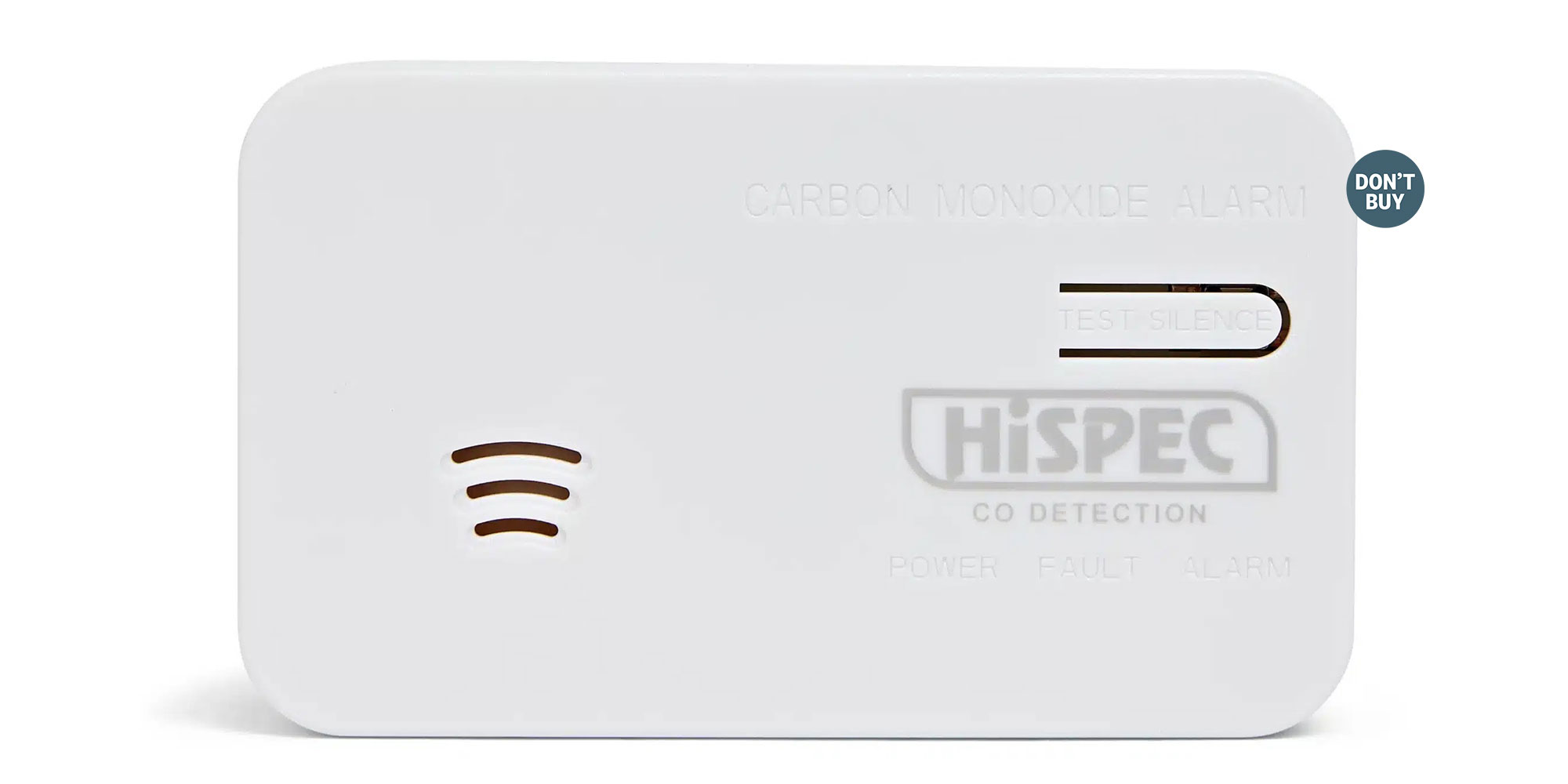
The Hispec HSA/BC/10 carbon monoxide alarm featured above failed to detect the killer gas in five CO detection tests. We bought the alarms used for testing online – just as any shopper would. And we found that three of the samples remained silent in the presence of CO at least once each in our tests.
The consequences of an alarm not sounding when needed don’t bear thinking about. That’s why we've made this dangerously unreliable detector a Don’t Buy.
The manufacturer told us: 'Hispec treats product safety and quality with the utmost seriousness. All of our CO alarms, including the HSA/BC/10, are rigorously tested and certified to BS EN 50291-1:2018. While we respect Which?’s commitment to independent product evaluation, we are concerned that their findings appear to conflict with the results of our accredited testing.
'Our products are manufactured under robust quality control processes to ensure full compliance with the applicable standards and to deliver the highest level of safety to our customers. We stand firmly behind the quality and reliability of our alarms which have consistently passed independent certification tests.'
How we test carbon monoxide detectors

We expose each carbon monoxide (CO) detector to various concentrations of the gas, and we measure response times and loudness, plus we check the instructions, too.
- CO tests start at 30 parts per million (ppm), where alarms shouldn't trigger. At 50ppm, alarms should sound between 60 and 90 minutes. At 100ppm, the alarms should sound between 10 and 40 minutes. And at 300ppm, the alarms should take 3 minutes to sound.
- We expose the alarms to a catastrophic amount of CO (5,000ppm) to see whether they detect the gas and continue to work afterwards.
- All alarms need to hit a noise level of 85dB at a distance of 1 metre.
- We read the instructions to make sure the advice provided will lead to safe installation and operation.
- Finally, we test the alarms 90 days after their initial tests to see if they're still detecting CO reliably.
- All carbon monoxide detection tests are carried out to British Standard BS EN 50291-1.
We regularly revisit the carbon monoxide detectors on sale to see if there are any more popular models that need testing, and when we find them we do.
Find out more about how Which? is not influenced by product manufacturers or retailers and how your support helps us to stay editorially independent
Where to place and install a carbon monoxide detector

Fit your detector high up in the same room as the potential source of carbon monoxide, around 15cm from the ceiling and at least 1 metre away from boilers, cookers and fires.
Make sure it’s not directly above a source of heat or steam. It doesn't need to be fixed to a wall – a shelf will be suitable.
What to do when a carbon monoxide detector goes off
- Open all doors and windows The first task is to open all doors and windows to ventilate and try to clear some of the deadly gas.
- Turn off gas appliances and leave the house Switch off all fuel-burning appliances, such as boilers and fires. Regardless of whether you feel ill or well, remain outside until you've spoken to a doctor or called the emergency advice line.
- Don’t switch on the lights, smoke or strike a match Once the alarm has sounded, avoid using light switches, smoking or striking a match (to light a candle, for example) as this could create a spark that could catch fire.
- Seek medical advice If you feel ill or exhibit any of the symptoms of carbon monoxide poisoning (see below) after your alarm goes off, contact your doctor immediately or call 999 for an ambulance.
- Call the emergency advice line If you believe your carbon monoxide emergency was caused by a gas appliance, call the Gas Emergency Service on 0800 111 999. If you use oil to heat your home, call Oftec on 01473 626 298.
- Arrange to have your appliances serviced If your boiler, heater, stove or fire is producing dangerous levels of carbon monoxide, there's something wrong with it, and it will need to be serviced by a professional. Find a recommended, local Which? Trusted Traders heating engineer in your area.
Can you use rechargeable batteries in a carbon monoxide detector?

If your carbon monoxide detector uses replaceable batteries, avoid using rechargeable batteries in it. Rechargeables drain more quickly than disposables, and this means you'll need to replace them more often.
If you don't want the hassle of changing batteries, go for an alarm with a sealed battery designed to last the lifetime of the detector.
See which are the best AA and AAA batteries in our tough lab tests and compare big brands with supermarket own-brands.
Why is my carbon monoxide detector beeping?
Beeping or chirping coming from a carbon monoxide detectors can mean one of three things:
- Low battery If your detector uses replaceable batteries, a chirp or beep every minute is your cue to replace the batteries.
- End of life warning All CO detectors have a set lifetime which can be as long as 10 years. Chirping every 30 seconds is the sign that your alarm is ready to be replaced.
- Malfunction Chirping can also mean that the alarm isn't working properly.
Keep the instructions handy so you can use them to interpret your alarm's beeps and chirps.
Who needs to have a carbon monoxide detector in their home
If you live in a house or flat that’s entirely powered by electricity, you won’t need a carbon monoxide detector. But if you have a fuel-burning (gas, LPG, oil, wood) boiler, fire or stove, you should have one in every room where fuel is burned.
Even if you don't have any fuel-burning appliances in your home, carbon monoxide can seep through walls. So, if you live in a semi-detached home or a terrace and your neighbour burns gas, LPG, oil or wood, the safety-first approach would be to install a carbon monoxide detector.
How to select a carbon monoxide detector

Choose a carbon monoxide detector from a well-known brand that's widely available on the high street or online. Retailers such as Argos, B&Q, Currys, Homebase, John Lewis, Screwfix and Wickes only stock carbon monoxide alarms from well-known brands.
Cheap and unbranded alarms that you might find online for under £10 can’t always be relied on to detect carbon monoxide and to sound the alarm. Every unbranded carbon monoxide alarm we've tested has failed to detect the killer gas – and every one is a Don't Buy.
How many carbon monoxide detectors do I need?
You'll need a carbon monoxide detector for every room that carbon monoxide could be produced in. This means that if you have a gas boiler in the kitchen and a gas fire, open fire or log burner in the living room, a minimum of two detectors is advisable.
Gas distribution network Cadent also recommends installing detectors on every floor of your home and outside bedrooms.
How to test a carbon monoxide detector
Test your alarm regularly using the test button, and replace the batteries annually or when the low battery signal sounds.
Sealed battery alarms have a battery that will last as long as the alarm and so the battery will not need to be replaced.
How to avoid a carbon monoxide build-up

- Check for tell-tale signs of carbon monoxide A lazy yellow or orange flame on the hob, dark staining on fuel-burning appliances, your boiler's pilot light blowing out and increased condensation are all carbon monoxide warning signs to look out for.
- Install a reliable carbon monoxide detector Go for a carbon monoxide detector from a well-known brand that you can buy from reputable high street and online retailers. Avoid cheap and unbranded detectors from online marketplaces.
- Ensure all gas appliances are professionally installed and maintained Make sure all of your fuel-burning appliances are installed and serviced regularly by a gas installer with a Gas Safe Register accreditation.
- Keep flues, vents and chimneys clear An obstruction such as a bird’s nest could block a chimney and lead to a build-up of carbon monoxide. So if you have a chimney or flue, have it swept once a year.
- Replace old carbon monoxide detectors Carbon monoxide detectors have a set lifetime after which time the sensors start to fail and the alarm will need to be replaced. Carbon monoxide detectors emit a chirping sound to warn you that it's almost time for a replacement.
Spot carbon monoxide poisoning symptoms
The most obvious symptom of carbon monoxide poisoning is a headache. Other symptoms can feel similar to a dose of the flu, fatigue, food poisoning, a hangover or a virus.
But unlike with the flu or food poisoning, you won’t have a temperature. The symptoms will become worse the longer you’re exposed to carbon monoxide.
Carbon monoxide poisoning symptoms to look out for include:
- Headache
- Breathlessness
- Confusion
- Dizziness
- Nausea
- Stomach ache
- Tiredness
- Collapse and unconsciousness.
I live on a boat, do I need a carbon monoxide detector?
Living space on a houseboat can be limited and, with keeping water out a vital consideration, ventilation can sometimes be poor.
As fuel is burnt to power the vessel, heat water and provide heating, it's essential that carbon monoxide detectors are installed where the fuel is burned and where you'll be sleeping.
Should I take a carbon monoxide detector on holiday?
If you go to a holiday cottage in the UK or a hotel, it will need to be fitted with carbon monoxide detectors. But what you'll find when you travel abroad isn't so clear.
Carbon monoxide alarms are small, light, easy to pack and you'll find affordable options among our Best Buys if you're looking to take one with you.